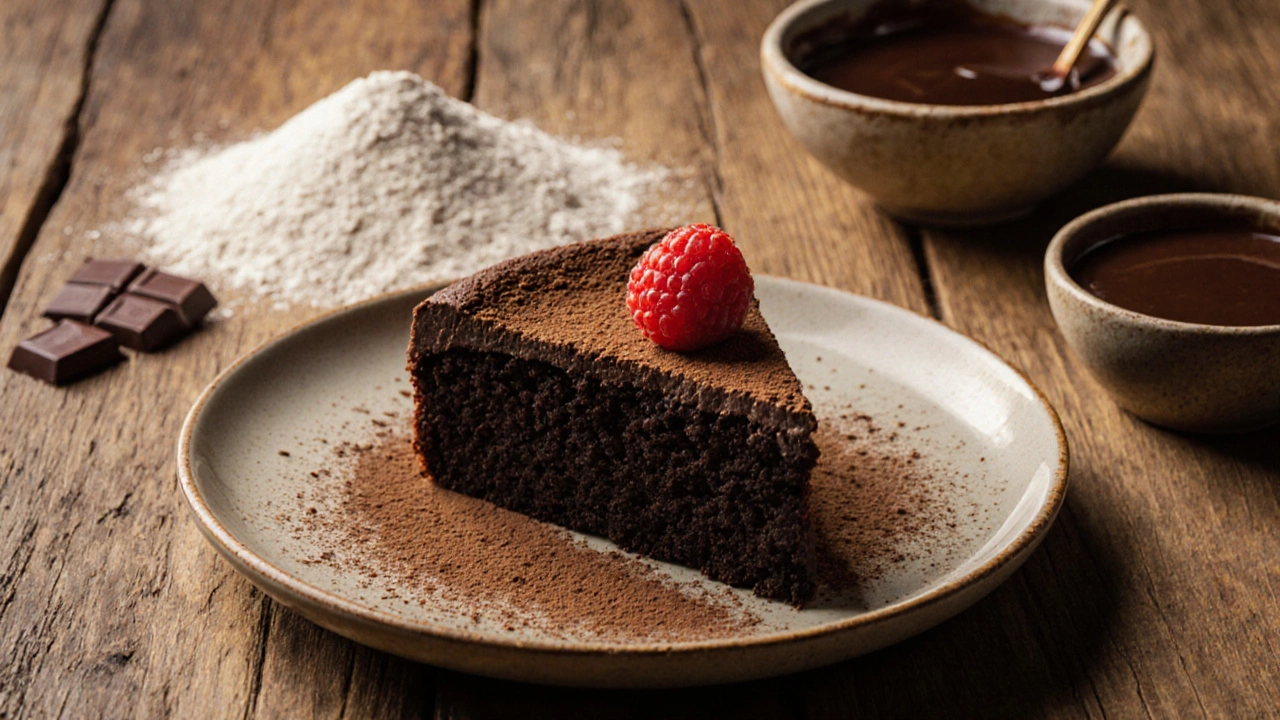
Gluten-Free Cake Checker
Check Your Cake
Enter any cake name to see if it's naturally gluten-free or requires special handling.
If you’re avoiding gluten-whether because of celiac disease, a sensitivity, or just a personal choice-you don’t have to give up cake. The truth is, gluten-free cakes aren’t just possible anymore. They’re delicious, moist, and just as celebratory as any traditional cake. But not every cake labeled "gluten-free" is created equal. Some are dry, crumbly, or taste like cardboard. Others? They’re so good you won’t believe they’re gluten-free.
What Makes a Cake Gluten-Free?
Gluten is a protein found in wheat, barley, rye, and sometimes oats (if they’re cross-contaminated). Traditional cakes rely on wheat flour for structure, rise, and texture. When you remove that, you need replacements that can mimic those qualities. Gluten-free cakes use flours like almond, coconut, rice, tapioca, or chickpea flour. These don’t have gluten, but they also don’t behave the same way. That’s why not every recipe works.
A good gluten-free cake needs a blend of flours-not just one. Most reliable recipes use at least two or three flours combined with a binder like xanthan gum or psyllium husk. Without a binder, your cake will fall apart. It’s not magic. It’s science.
Cakes That Naturally Don’t Contain Gluten
Some cakes don’t need flour at all. They’re built on ingredients that are naturally gluten-free. These are your safest, easiest bets:
- Flourless chocolate cake - Made with eggs, butter, sugar, and melted chocolate. No flour. No gluten. Just rich, dense, fudgy perfection. This is a classic dessert in many European kitchens and a go-to for gluten-free celebrations.
- Angel food cake - Traditionally made with egg whites and cake flour, but you can easily swap the flour for a gluten-free version. The structure comes from whipped eggs, not gluten. Just check your sugar and vanilla extract-some brands add gluten as a stabilizer.
- Macarons - These delicate French cookies are made from almond flour, egg whites, and sugar. They’re technically not cakes, but many people treat them like mini layered desserts. They’re naturally gluten-free if made with pure almond flour and no added fillers.
- Flourless almond cake - Ground almonds replace flour entirely. The result is a moist, nutty cake that holds together well. Often sweetened with honey or maple syrup, it’s perfect for breakfast or dessert.
- Chiffon cake made with gluten-free flour - Chiffon cakes rely on whipped egg whites for lift. When you swap wheat flour for a high-quality gluten-free blend, you still get that light, airy texture. Just make sure your baking powder is certified gluten-free.
Gluten-Free Cake Flours That Actually Work
Not all gluten-free flours are equal. Some are gritty. Some taste bitter. Some turn cakes into bricks. Here are the top flours that deliver real results:
- Almond flour - Adds moisture and richness. Best in dense cakes like flourless chocolate or carrot cake. High in fat, so it browns faster. Don’t use it alone-it needs help from other flours.
- Cassava flour - Made from yuca root. It’s neutral in taste and mimics wheat flour’s texture better than most. Works well in sponge cakes and layer cakes.
- Rice flour (white or brown) - Affordable and widely available. White rice flour is finer and lighter. Brown rice flour adds a nutty flavor but can be gritty if not finely milled.
- Tapioca starch - Not a flour, but a starch. It adds chewiness and helps bind. Always used in combination with other flours.
- Chickpea flour - High in protein and fiber. Adds a slight earthiness. Great in denser cakes like brownies or carrot cake, but not ideal for delicate sponge cakes.
Most professional gluten-free bakers use a pre-mixed blend. Brands like Bob’s Red Mill 1-to-1 Baking Flour or King Arthur Measure for Measure are reliable. They include xanthan gum and the right ratios. If you’re new to gluten-free baking, start with one of these.
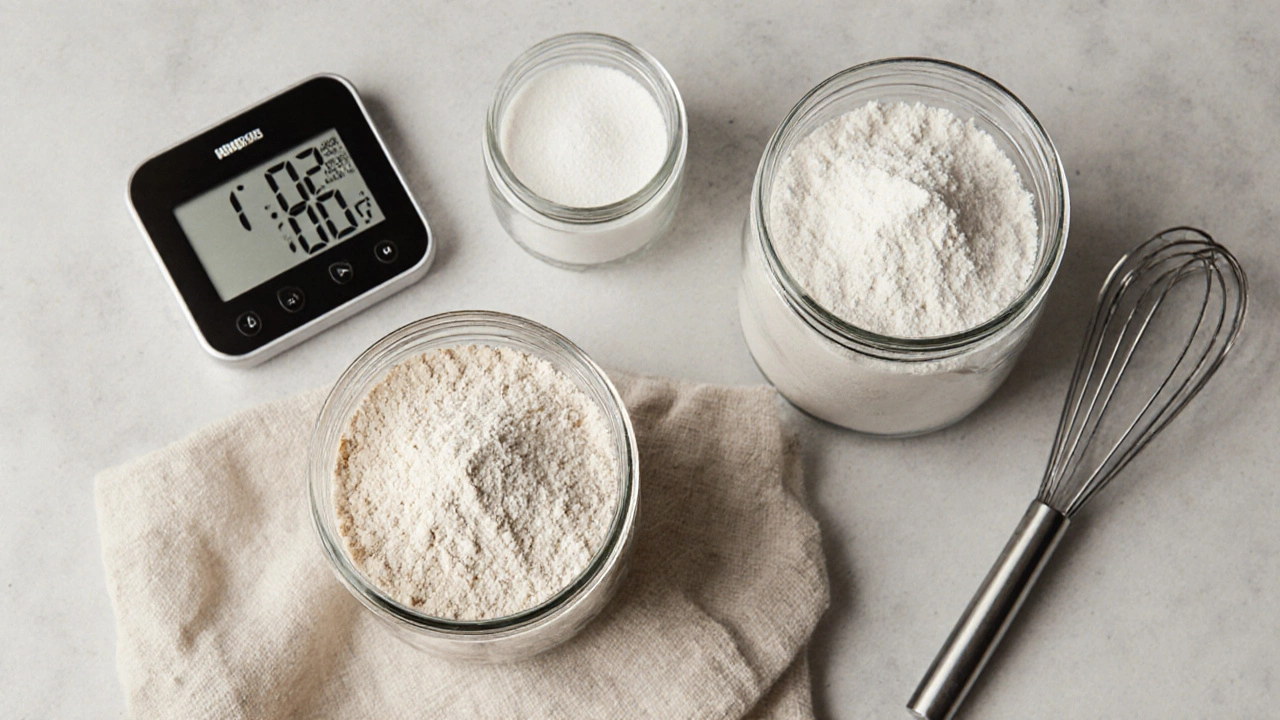
Common Mistakes That Ruin Gluten-Free Cakes
Even experienced bakers mess up gluten-free cakes. Here are the top three mistakes-and how to fix them:
- Using only one gluten-free flour - Almond flour alone will make a cake greasy. Rice flour alone will make it crumbly. Always blend at least two flours plus a starch.
- Skipping the binder - Xanthan gum or psyllium husk replaces gluten’s stickiness. Without it, your cake crumbles when you cut it. Use 1/2 teaspoon per cup of flour blend.
- Overmixing the batter - Gluten-free batters don’t need kneading. Overmixing develops starches and makes cakes gummy. Mix just until combined. That’s it.
Also, don’t assume store-bought cakes are safe. Many "gluten-free" cakes from bakeries are baked in the same ovens as regular cakes. Cross-contamination is real. If you have celiac disease, always ask about dedicated equipment.
Best Gluten-Free Cake Recipes to Try
Here are three tried-and-true recipes that never fail:
- Gluten-Free Chocolate Layer Cake - Uses a blend of almond flour, tapioca starch, and rice flour. Cocoa powder adds depth. Frost with dairy-free buttercream. Perfect for birthdays.
- Gluten-Free Carrot Cake - Grated carrots, cinnamon, walnuts, and a mix of cassava and almond flour. The moisture from the carrots keeps it tender. Cream cheese frosting? Yes, and it’s gluten-free too.
- Vanilla Sponge Cake - Made with cassava flour, tapioca starch, and potato starch. Whipped egg whites give it lift. Light enough for tea time, sturdy enough for fruit topping.
For all of these, use a kitchen scale. Gluten-free baking is precise. Measuring by cups leads to inconsistent results. Weigh your flours. It’s the one thing that makes the biggest difference.

Where to Buy Gluten-Free Cake Mixes (and Which Ones to Avoid)
If you’re short on time, a good mix can save the day. But not all are worth it.
- Best pick: King Arthur Gluten-Free Yellow Cake Mix - Tastes like real cake. Moist, fluffy, and no aftertaste. Works well for layer cakes.
- Runner-up: Bob’s Red Mill Gluten-Free Vanilla Cake Mix - Slightly sweet, good texture. A bit denser than King Arthur, but reliable.
- Avoid: Generic store brands - Many use cheap rice flour and fillers. They taste chalky. Stick to trusted names.
Always check the label. Even if it says "gluten-free," look for a certification like GFCO or Celiac Support Association. That means it’s tested to under 10 ppm of gluten-safe for celiac disease.
Gluten-Free Cake Myths Debunked
There’s a lot of misinformation out there. Let’s clear it up:
- Myth: Gluten-free cakes are always dry. Truth: They can be moist-if you use enough fat (butter, oil, yogurt) and avoid overbaking.
- Myth: You can just swap wheat flour 1:1 with gluten-free flour. Truth: That’s how you end up with a brick. You need a blend and a binder.
- Myth: Gluten-free means sugar-free or low-calorie. Truth: Gluten-free cakes often have more sugar and fat to compensate for texture. They’re not automatically healthy.
Gluten-free baking isn’t about restriction. It’s about adaptation. Once you learn the rules, you can make any cake-birthday, wedding, holiday-without gluten.
Can I make gluten-free cakes without xanthan gum?
Yes, but you’ll need another binder. Psyllium husk powder works well-use 1 teaspoon per cup of flour blend. Ground flaxseed mixed with water (flax egg) can also help bind, though it adds a nutty flavor. Without any binder, your cake will crumble.
Are all store-bought cakes labeled "gluten-free" safe for celiac disease?
Not always. Some are made in shared facilities where wheat flour is airborne. Look for a certification logo like GFCO or NSF Gluten-Free. These mean the product is tested to contain less than 10 parts per million of gluten-safe for most people with celiac.
Why does my gluten-free cake sink in the middle?
This usually happens if the cake is underbaked or if you opened the oven door too early. Gluten-free batters are more delicate. Bake until a toothpick comes out clean, and don’t open the oven until at least 3/4 of the bake time has passed. Also, check your leavening agents-old baking powder won’t rise properly.
Can I freeze gluten-free cakes?
Yes, and they often freeze better than regular cakes because they’re denser. Wrap the cooled cake tightly in plastic wrap, then in foil. Freeze for up to 3 months. Thaw at room temperature. Frost after thawing to avoid sogginess.
What’s the best gluten-free flour blend for beginners?
Start with King Arthur Measure for Measure or Bob’s Red Mill 1-to-1 Baking Flour. Both include xanthan gum and are designed to replace wheat flour cup-for-cup. They’re reliable, widely available, and work in most cake recipes without adjustments.
Next Steps: Start Baking
Don’t wait for a special occasion. Make a small gluten-free cake this weekend. Try the flourless chocolate cake-it’s foolproof. Use a scale. Measure your ingredients. Don’t skip the binder. And taste as you go.
Gluten-free baking isn’t about perfection. It’s about finding what works for you. Once you get the basics, you’ll realize: you don’t need gluten to celebrate.





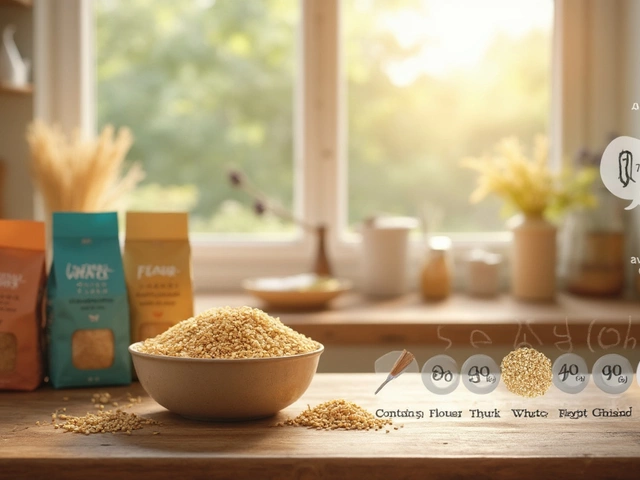


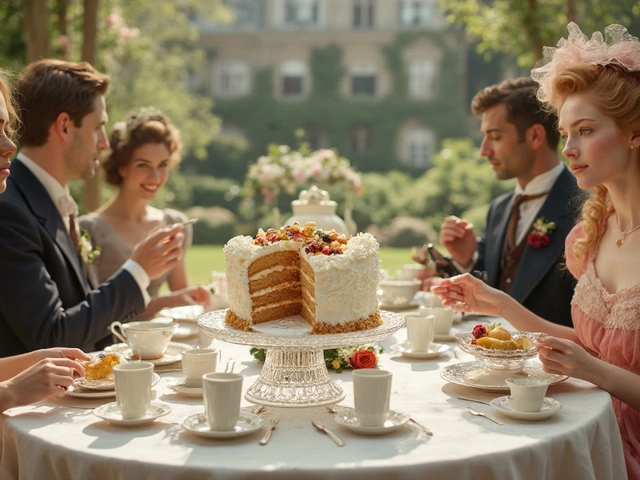

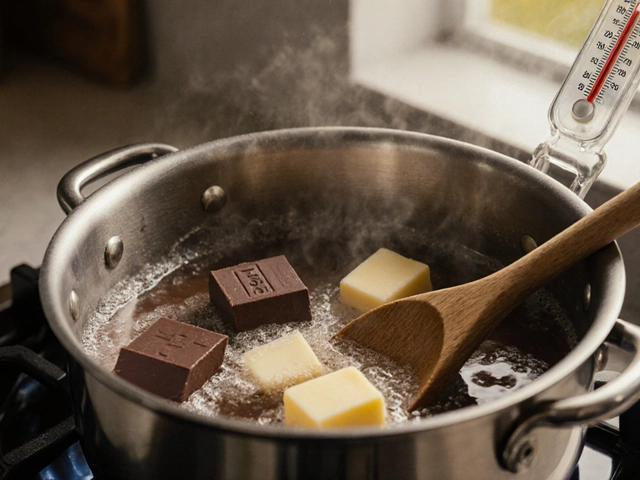
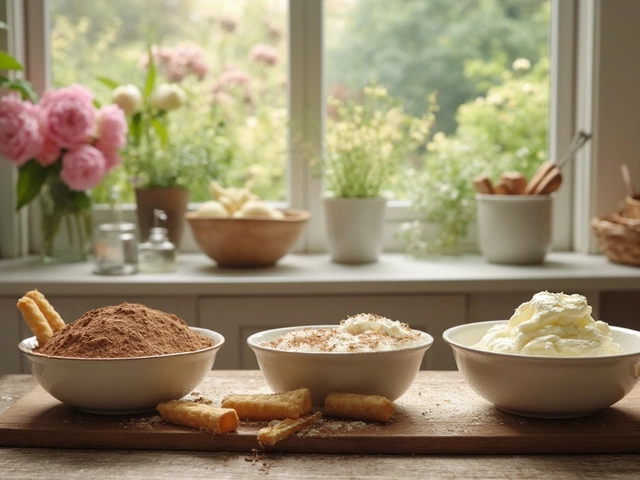
Write a comment